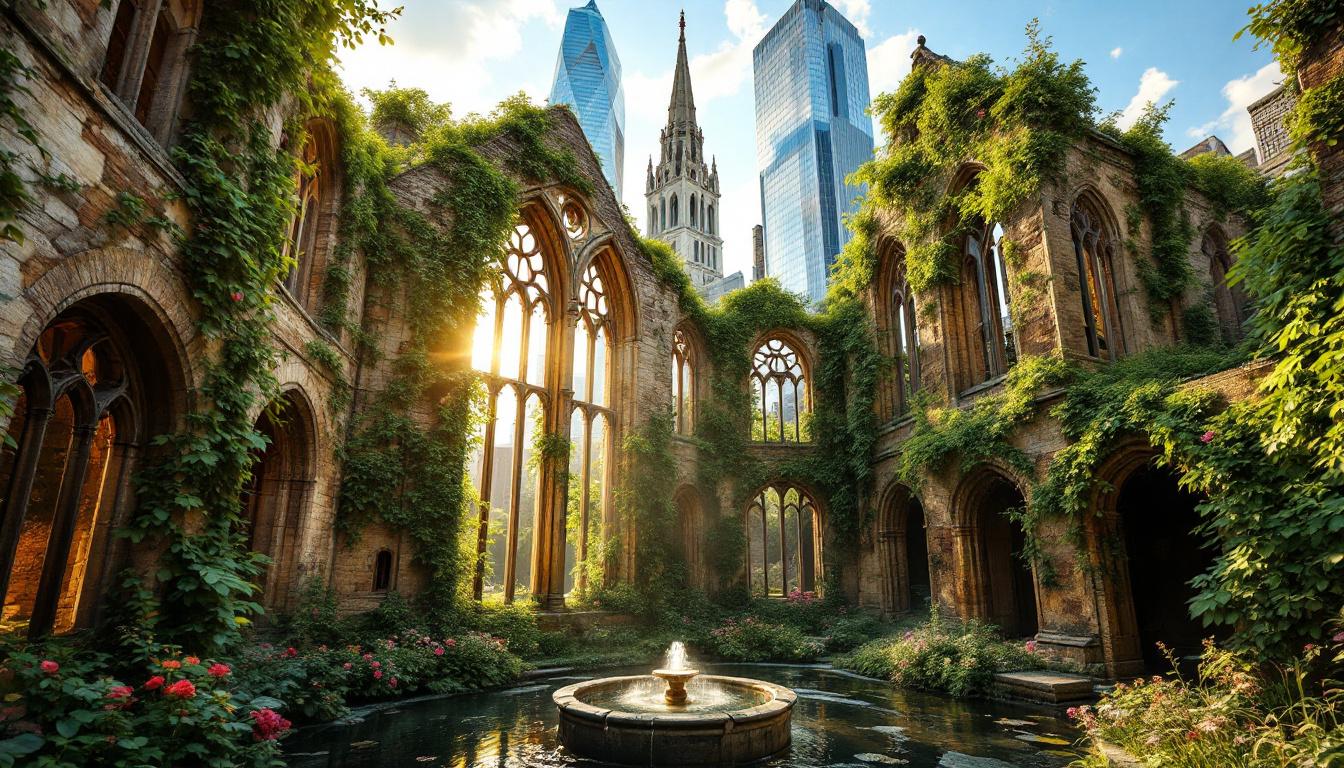I stumbled upon St Dunstan-in-the-East during a hectic lunch break in London’s financial district, expecting nothing more than a quick sandwich spot. What I found completely transformed how I experience this ancient city.
Tucked between towering glass offices and the relentless hum of commerce, this Grade I listed church garden felt like stepping through a portal into medieval England. The contrast was so jarring, so unexpectedly beautiful, that I stood frozen in the entrance for several minutes.
Most Londoners rush past the small entrance on St Dunstan’s Hill, unaware that behind those unremarkable gates lies what locals quietly call “London’s secret sanctuary.” I discovered why they guard this treasure so protectively.
The moment everything changed about London for me
Christopher Wren’s tower emerging through ivy
The first thing that stopped me wasn’t the ruins themselves, but Wren’s gothic spire piercing through cascading greenery like something from a fairy tale. Built between 1695-1701, those flying buttresses frame the sky in a way that makes you forget you’re surrounded by financial skyscrapers.
Medieval stones telling thousand-year stories
I reached out to touch walls that have witnessed nearly 1,000 years of London history, from the original 12th-century construction through the Great Fire of 1666 and the Blitz bombing that created this garden. Scorch marks from Nazi incendiary bombs still streak the ancient stones.
What I found that no guidebook mentions
The fountain bubbling in what was once the nave
Where worshippers once gathered for medieval mass, a gentle fountain now bubbles among climbing roses and ivy. The sound creates an almost mystical atmosphere that drowns out the city chaos just meters away through those ruined walls.
A living museum growing wild
Unlike manicured tourist gardens, this space feels authentically wild. Plants climb through window frames where stained glass once filtered light, creating natural cathedral windows that change with the seasons. I watched office workers find peace here during their brief escapes from corporate life.
The discovery that surprised me most
Complete solitude in central London
While Windsor Castle charges £28 and battles crowds of 1.5 million visitors annually, this remarkable space costs nothing and feels blissfully empty. I’ve returned dozens of times and rarely encountered more than three or four other people.
Sacred services still happening in the ruins
The City of London Corporation maintains this as both garden and occasional worship space. Palm Sunday services still occur among the ruins, connecting visitors to centuries of spiritual tradition in the most atmospheric setting imaginable.
How this changed my entire approach to London
Finding medieval London hiding in plain sight
This discovery taught me that authentic London isn’t in the tourist zones, but tucked into unexpected corners of the ancient Square Mile. I now explore the City of London with completely different eyes, seeking these hidden historical gems.
Understanding what locals actually treasure
I realized why Londoners speak about this place in hushed, protective tones. It’s not just a garden—it’s a sanctuary from modern life that maintains its power precisely because it remains relatively unknown to mass tourism.
Access couldn’t be simpler: a five-minute walk from Bank or Monument stations leads to St Dunstan’s Hill. The garden opens during daylight hours year-round with no admission fees, though medieval castle enthusiasts might also appreciate Bamburgh’s dramatic coastal setting.
Professional photography requires permits, but casual photos are welcome—and trust me, you’ll want to capture those ivy-framed views of Wren’s masterpiece against modern London’s skyline.
Frequently asked questions
When should I visit for the best experience?
Early morning weekdays offer the most solitude, while July through September provides the lushest garden conditions. Avoid lunch hours when nearby office workers discover the same peaceful refuge I found.
How does this compare to other London gardens?
Unlike crowded spaces such as Cotswolds villages or commercial attractions, this feels authentically wild and historically significant without any tourist infrastructure or commercialization.
What makes this garden culturally significant?
Named for Saint Dunstan, the 10th-century Archbishop of Canterbury, this space represents London’s remarkable ability to transform destruction into beauty while preserving nearly a millennium of spiritual and architectural heritage.
Sometimes the most profound travel discoveries happen during ordinary moments. This tiny garden proved that London still holds secrets worth protecting, and I’m grateful to have stumbled into one during that forgettable lunch break that became completely unforgettable.
